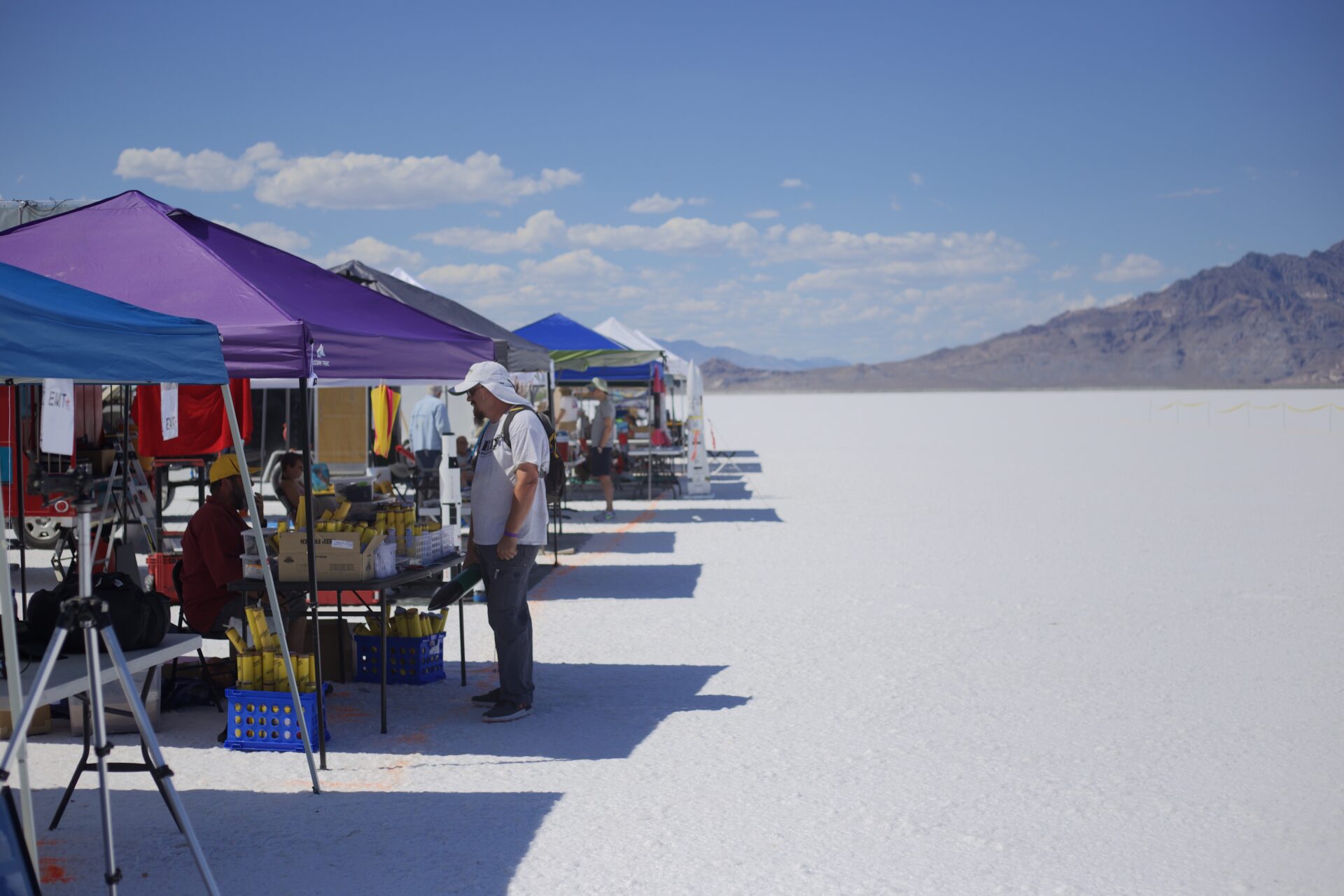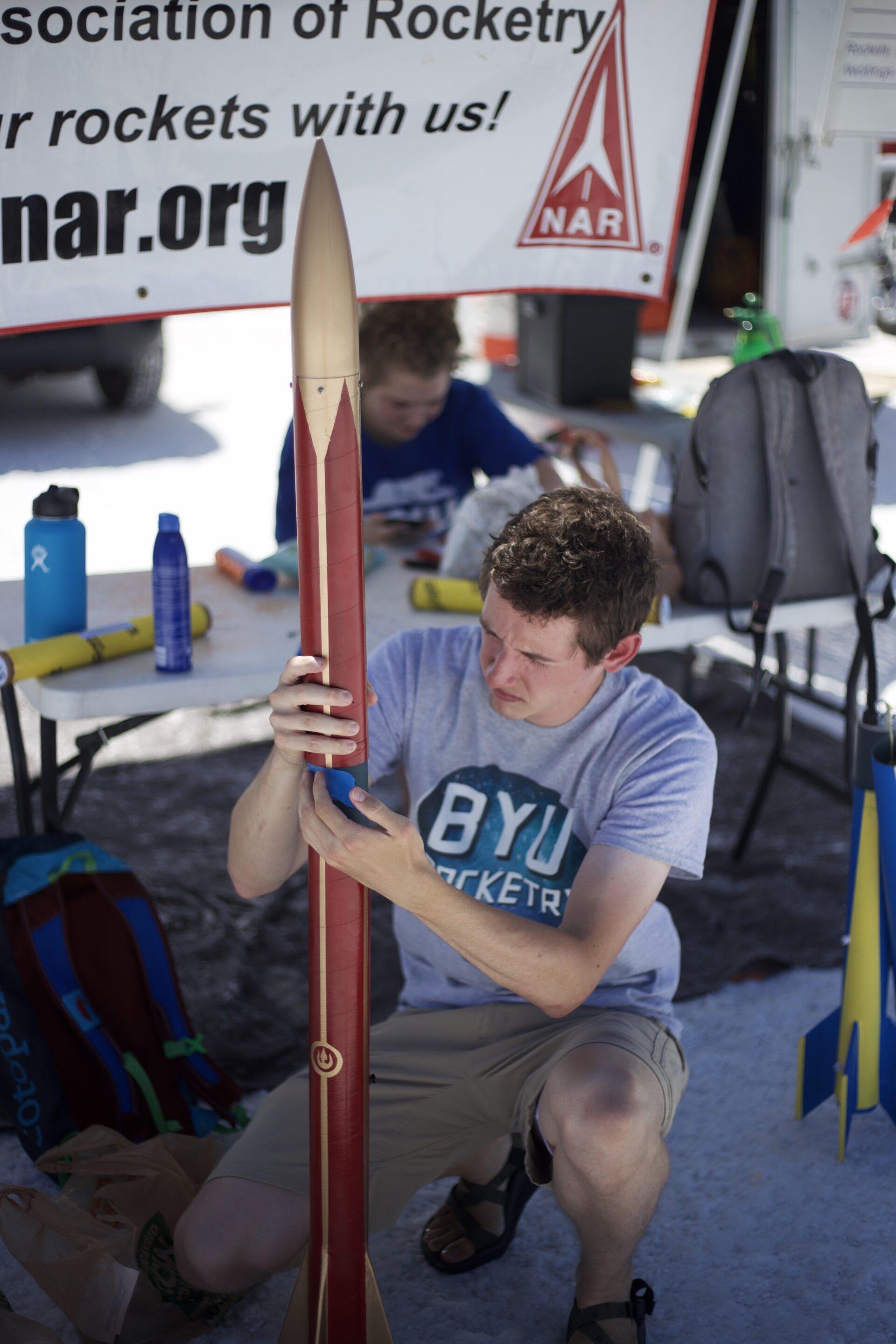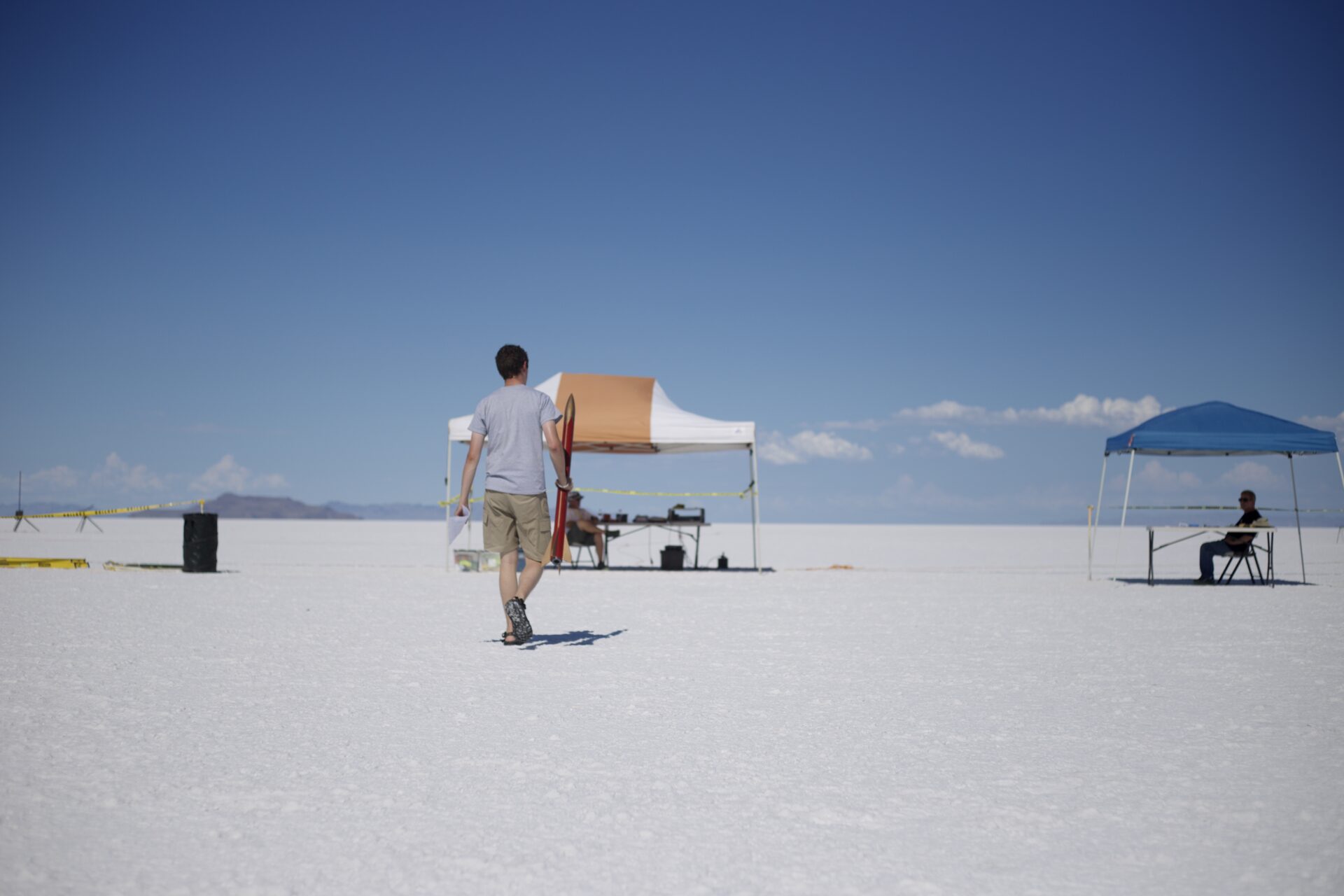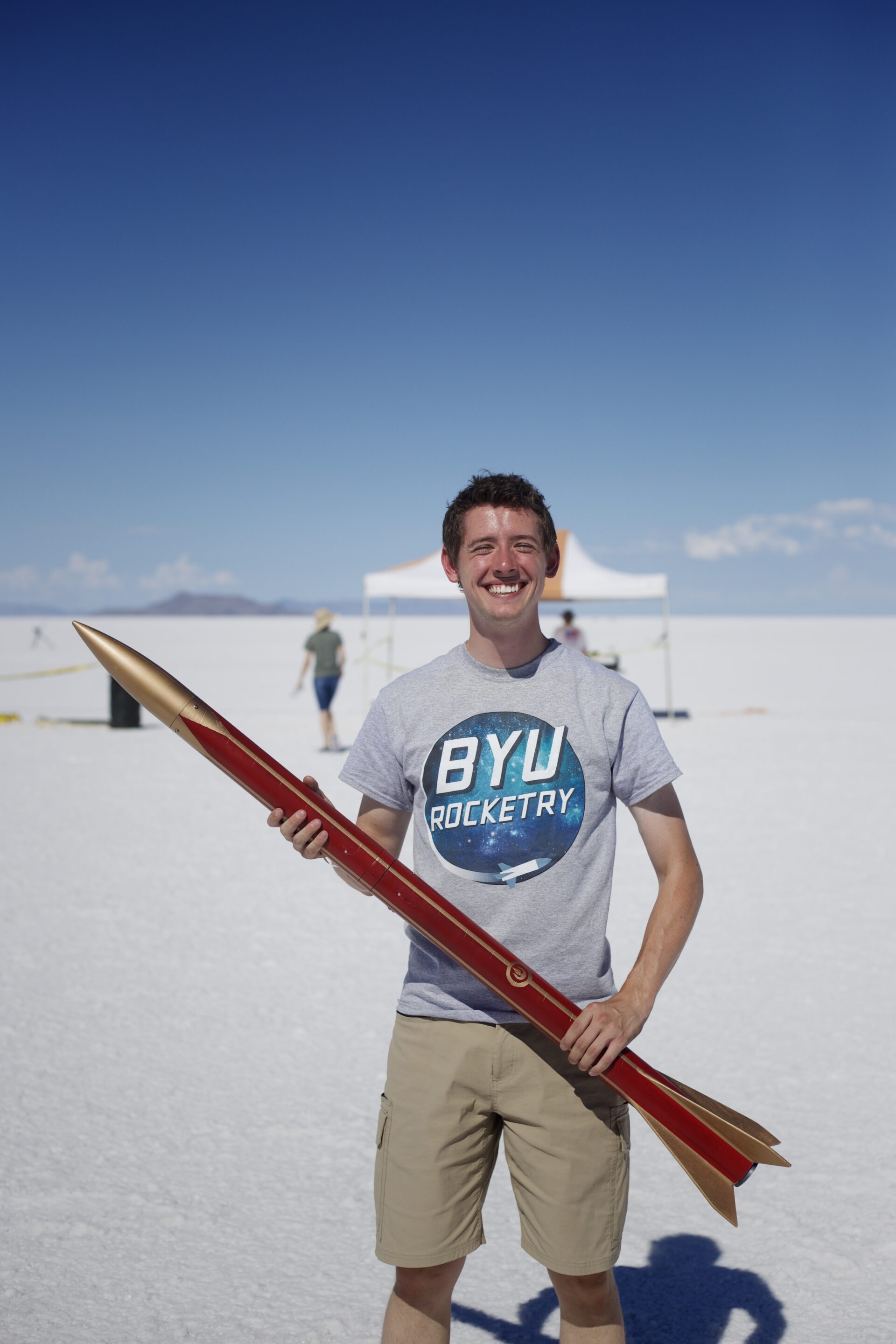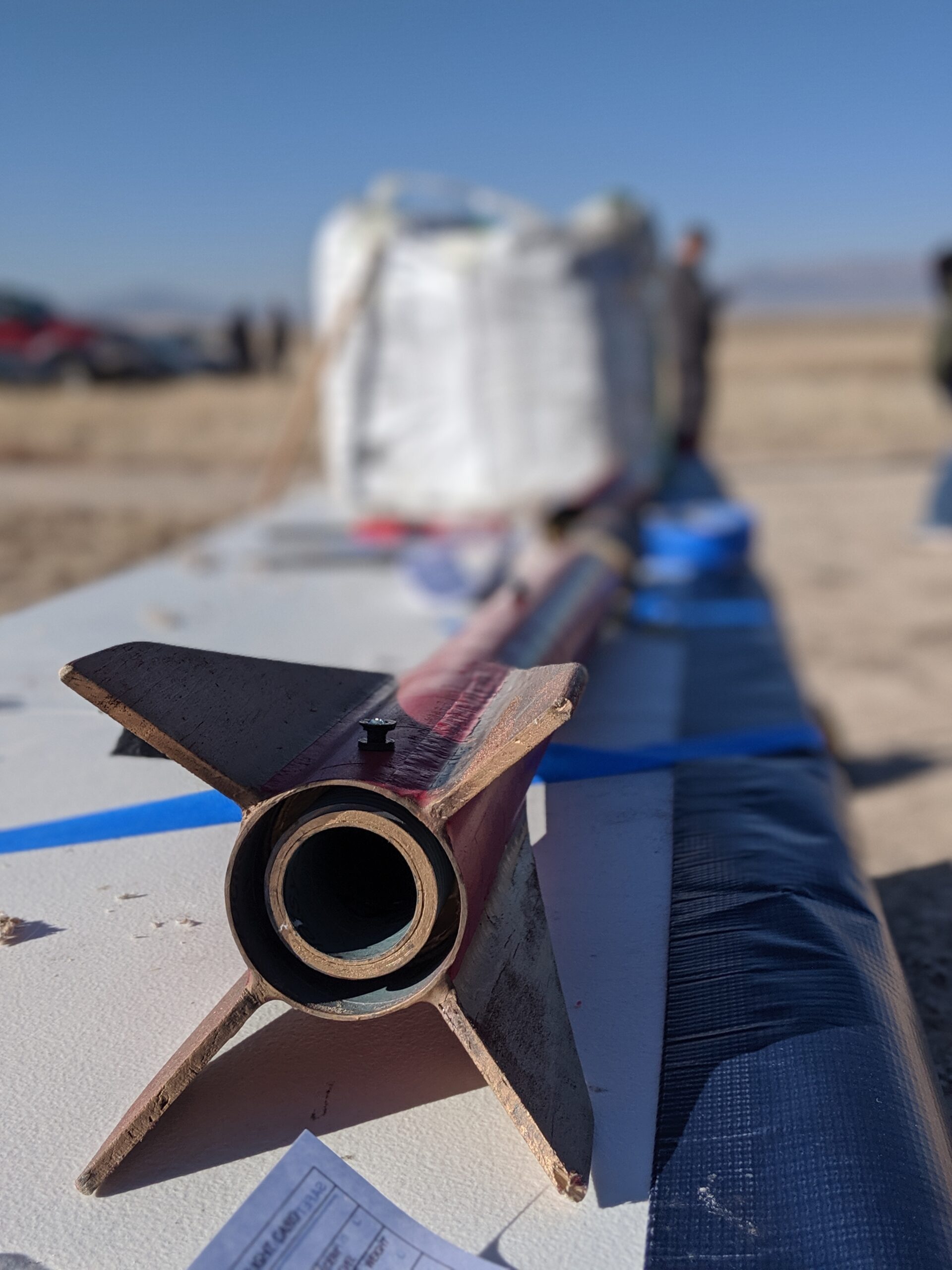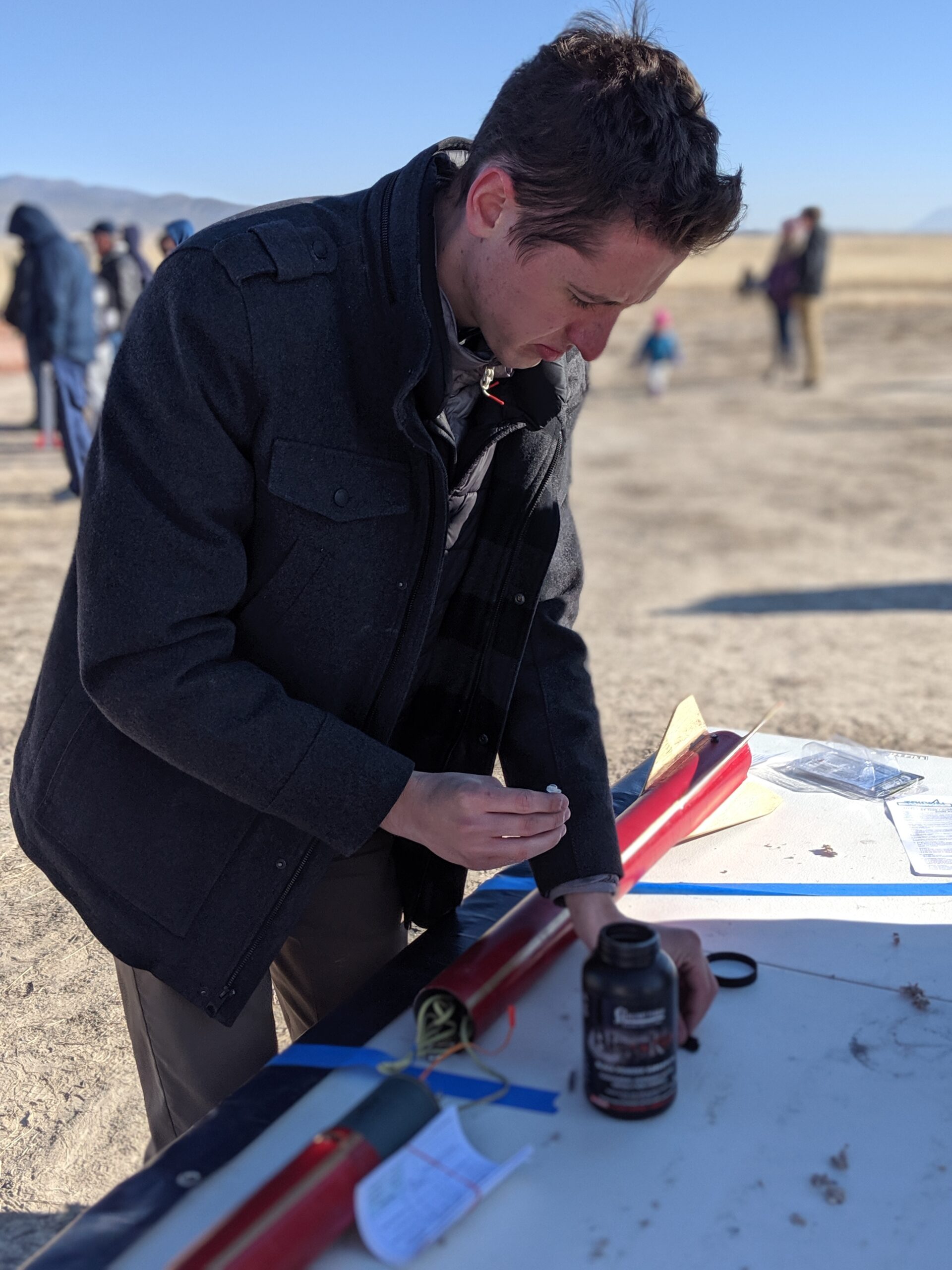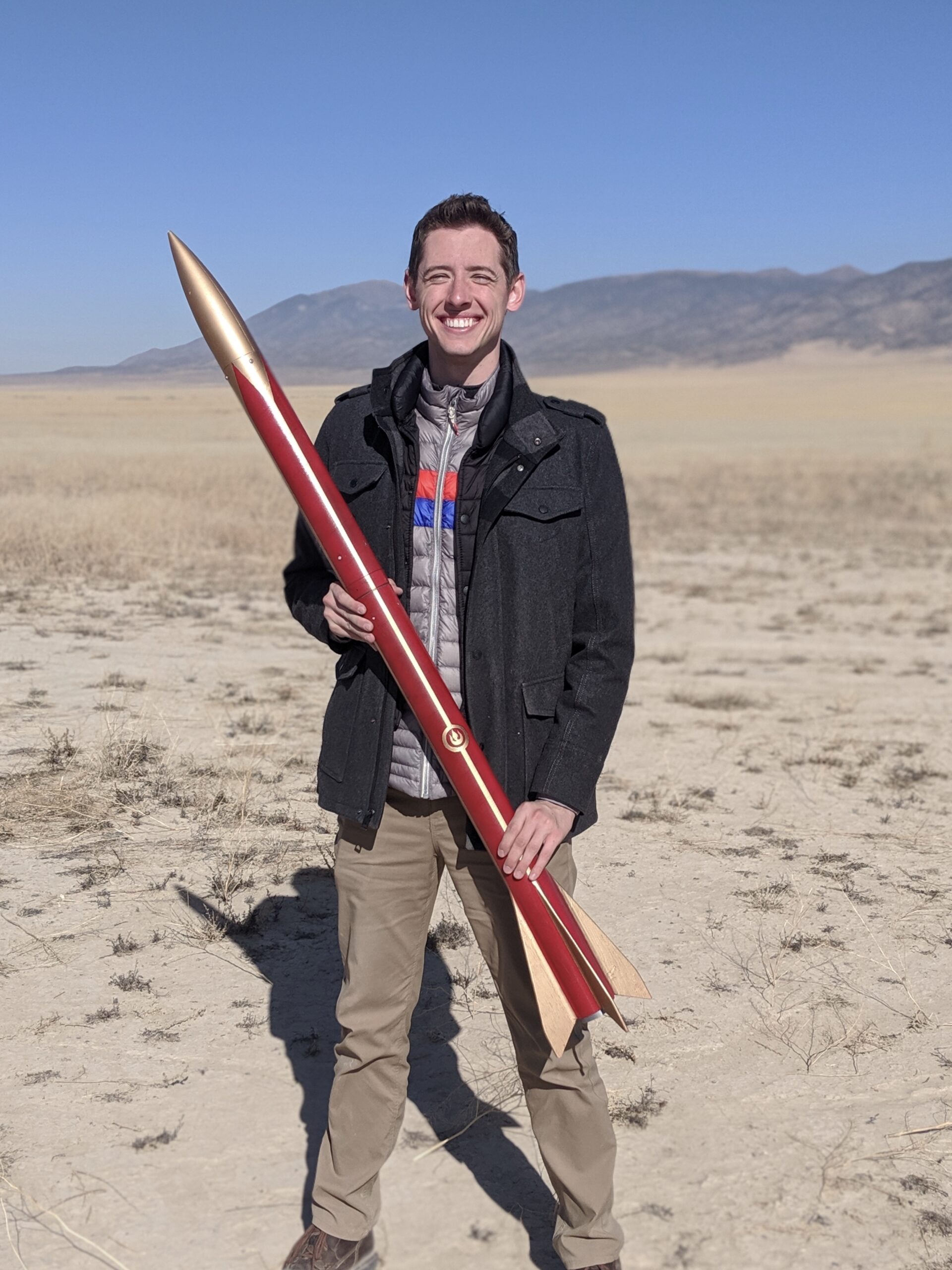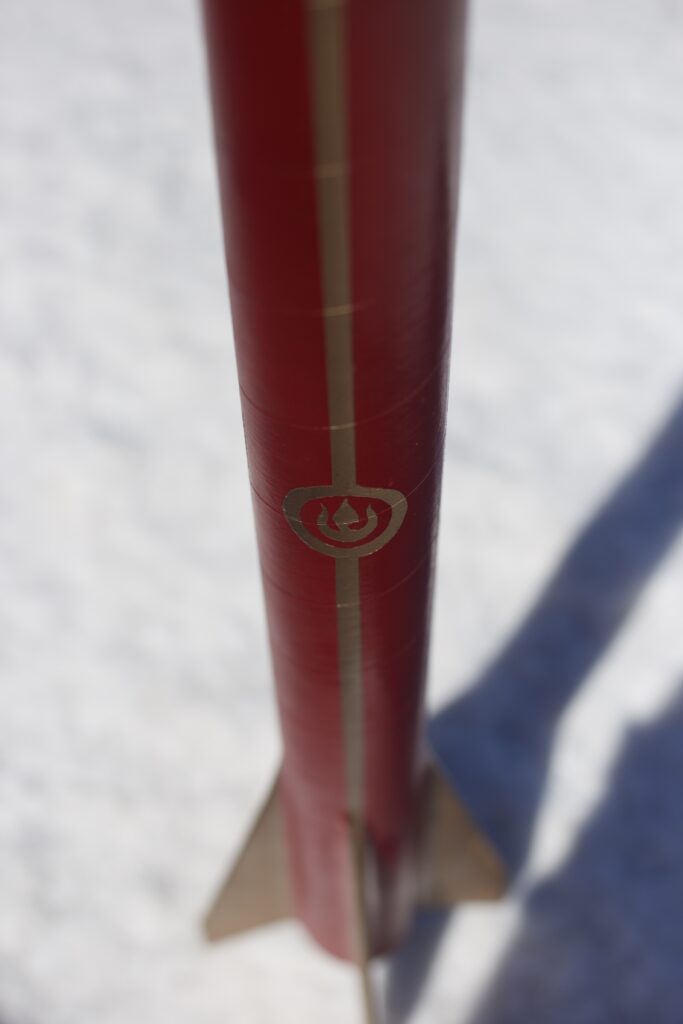
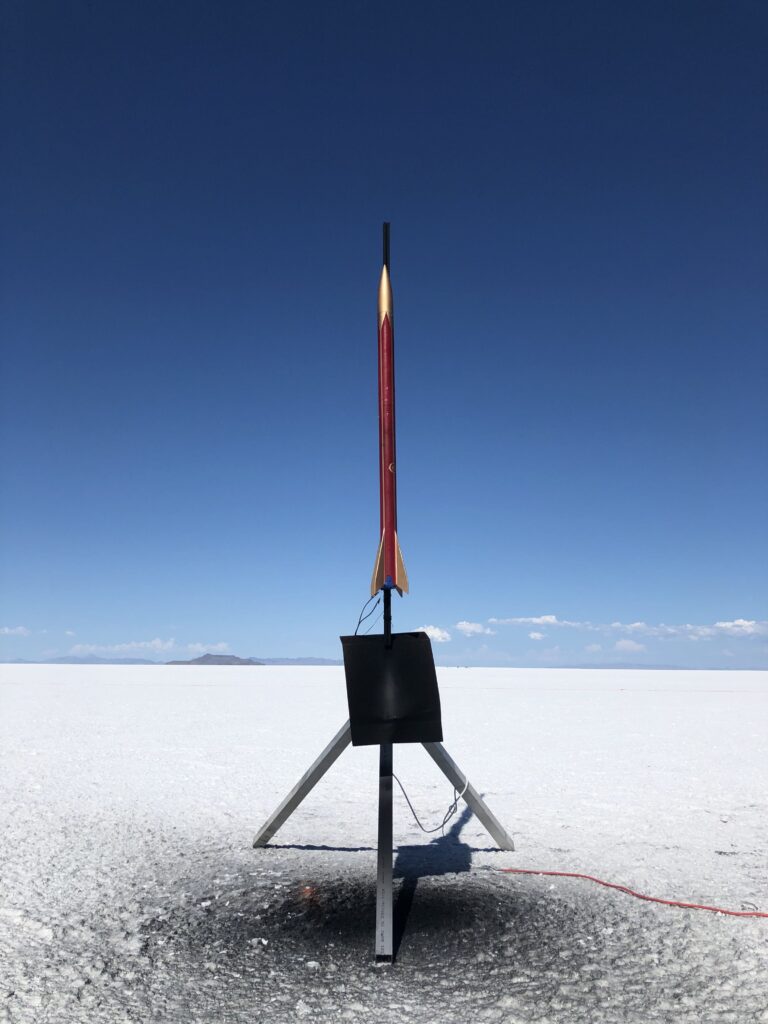
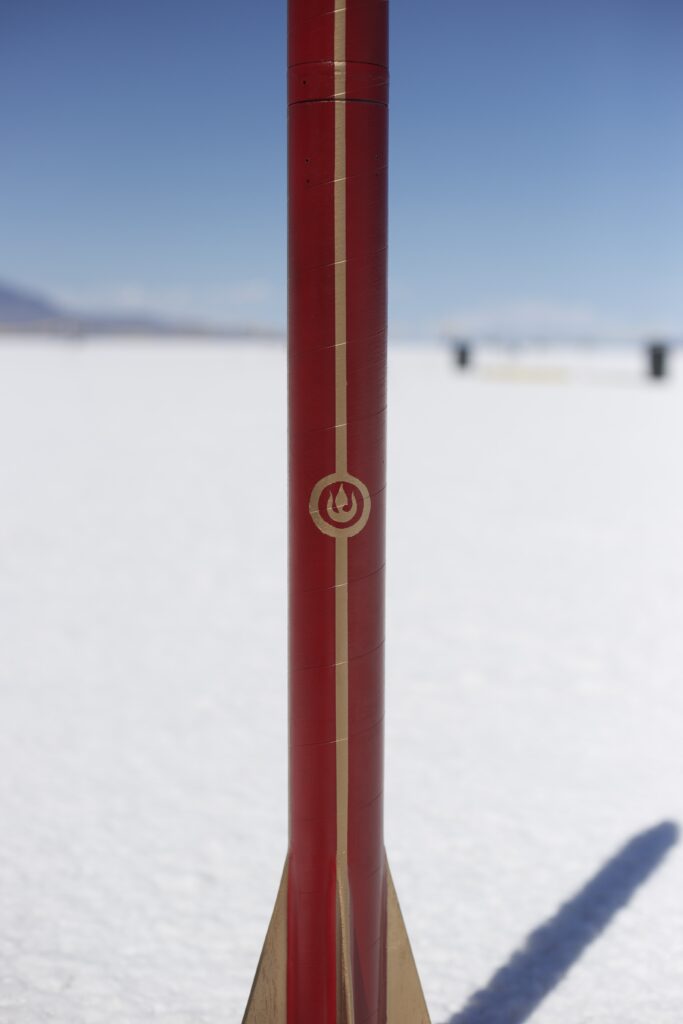
While studying engineering, I became fascinated by the technical challenges of high-power rocketry, with certifications from the National Association of Rocketry (NAR) representing a tangible way to test and expand my skills. However, as a college student, I wanted to save as much money as possible. So, I devised a plan to achieve my Level 1 and Level 2 high power certifications using the same rocket, designed to handle the impulse from the most powerful level 1 motors (I class) and the lowest powered level 2 motors (J class). Sozin’s Comet became my solution to this challenge – a versatile rocket that could prove my skills without requiring me to build and invest in two separate vehicles.
Design and Construction


Using OpenRocket simulation software, I designed Sozin’s Comet to meet the technical requirements for my high-power rocketry certifications. The rocket’s name and aesthetic drew inspiration from the Fire Nation in Avatar: The Last Airbender, which influenced its striking paint scheme of red and gold, complete with a Fire Nation symbol that added a personal touch to the technical design.
Dual-Deployment
The substantial altitudes achieved with high-power I and J class motors necessitated the use of a dual-deployment recovery system. This critical design involves deploying two different parachutes at strategic points during the rocket’s descent: a smaller drogue parachute at apogee (the highest point of the rocket’s flight) and a larger main parachute at a lower altitude closer to the ground. To accomplish this, a flight computer is used to track the rocket’s altitude and trigger both separation events .
Once the flight computer’s altitude readings indicate a separation event should occur, it sends a signal to the appropriate section of the rocket where black powder charges are mounted to the avionics bay bulkhead. A small spark ignites the black powder, building pressure in the rocket which shears through the nylon pins holding the rocket sections together, causing the rocket to open. A long shock cord connects the separated components, with the appropriate parachute attached at its midpoint, ensuring a controlled and stable descent.
Dual-deployment serves several crucial purposes. At high altitudes, where wind speeds can be significantly stronger, the drogue parachute provides initial stabilization and controlled descent, preventing the rocket from drifting too far from the launch site. Its smaller size allows for a faster, more controlled fall that reduces the potential for the rocket to be carried off course by high-altitude winds. As the rocket approaches the ground, the main parachute then deploys, significantly reducing the descent velocity and ensuring a soft, safe landing that minimizes the risk of damage to the rocket’s structure.
This approach is particularly important in high-power rocketry, where the combination of extreme altitudes and potentially unpredictable wind conditions can easily lead to lost or damaged rockets. By carefully managing the descent with two strategically deployed parachutes, I could maximize the chances of recovering Sozin’s Comet intact, protecting both the physical investment in the rocket and the valuable data and experience gained from each flight.
Level 1 Certification
At the Bonneville Salt Flats in Utah during the Hellfire 24 event in August of 2019, I conducted my Level 1 high-power rocketry certification flight. The event marked the final Hellfire gathering, as subsequent changes in local flight waivers would restrict high-altitude rocketry in the area due to new airport flight paths.
Sozin’s Comet soared to an impressive 4,642 feet during the flight on an I-500 motor. While the mission didn’t go exactly as planned – only the main parachute deployed due to insufficient black powder for the drogue charge – the rocket landed intact. The successful flight demonstrated the rocket’s robust design and structural integrity. Despite the deployment issue, I achieved my Level 1 certification from the National Association of Rocketry (NAR), marking a significant milestone in my rocketry journey.
The flight proved the rocket’s fundamental capabilities and provided valuable lessons about precise charge deployment, setting the stage for my subsequent Level 2 certification attempt.
Level 2 Certification
In November of 2019, I conducted my Level 2 high-power rocketry certification flight during a launch event hosted by the Utah Rocketry Club (UROC) in Rush Valley, Utah. Having already passed the NAR Level 2 Written Exam and prepared Sozin’s Comet for a more powerful flight, I was ready to demonstrate the rocket’s capabilities.
Using a J270 W motor, the rocket soared to 4,675 feet, achieving the significant altitude required for Level 2 certification. The flight revealed some challenges with the rocket’s stability, as Sozin’s Comet experienced minor wobbling during its ascent. This instability likely resulted from minor imperfections in fin alignment introduced during its previous Level 1 certification landing. Despite these stability issues, the rocket completed its flight successfully, deploying its dual-deployment system and landing safely. The Certification Team witnessed the flight, ultimately granting my Level 2 high-power rocketry certification.

